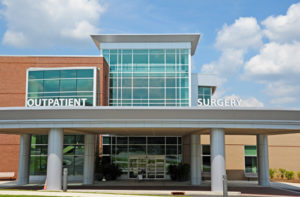Smart Selling: Distributor Sales Strategies From HIDA
By Elizabeth Hilla, Senior Vice President, Health Industry Distributors Association
Ambulatory surgery centers (ASCs) increasingly deliver complex medical care, as more procedures move from inpatient to outpatient settings. Surgery centers are projected to increase their share of all outpatient surgery types by the end of the decade.
As with any customer, the key to winning ASCs’ business is to understand and meet their unique needs. While ASCs increasingly handle complex cases, they are not mini-hospitals. Their needs are different from those of hospital ORs and from physician practices.
What’s happening in the sector
 HIDA’s ASC Market Report contains a number of useful insights for understanding ASC market shifts. These include:
HIDA’s ASC Market Report contains a number of useful insights for understanding ASC market shifts. These include:
- The sector is rapidly expanding. More than half (58%) of outpatient surgeries were performed by ASCs, up from 41% in 2005. ASCs’ share of outpatient surgery is expected to grow to 60% by 2020.
- Surgeries are shifting from inpatient to outpatient settings. In 2005, 58% of surgeries were performed in an outpatient setting, and that figure is expected to reach 64% by 2020.
- Gastroenterology is the most common ASC specialty. These procedures account for 25% of cases, followed by ophthalmology (20%), orthopedics (16%), and pain management (16%).
How you can help
Distributor reps have many resources and services that can help ASCs flourish. Consider talking with ASC customers about:
- The benefits of a single supplier. I’ve heard from many salespeople that ASCs often buy individual products here and there directly from the manufacturer. These providers usually end up paying a premium for low volume, or buying larger quantities than they need, paying high shipping costs, and waiting a long time for delivery. Ask your prospect if they are buying anything direct and, if it is a manufacturer you work with, see if you can save the ASC time and money by getting it for them.
- More appropriate order size. Reps who call on this market tell me that most ASCs have one small inventory room. To optimize space and availability, offer to help analyze historical usage and establish a suitable product ordering frequency. Suggest perpetual inventory (getting weekly supply orders delivered at a set time) or recommend smaller, more frequent just-in-time deliveries.
- Training for new revenue-boosting procedures. Your manufacturer representative partners often provide training to ASC doctors for revenue-boosting procedures, especially if their product can be used for this purpose. Find ways to coordinate and facilitate these sessions.
- Consensus building for new product introductions. If the purchasing person thinks it is too much effort to get a group of doctors to agree on which new product to try, offer to build consensus by making a presentation at their next staff meeting.
- Targeted value-added services. Position yourself as a business partner by first asking the administrator what his or her goals and challenges are, then using this information to add value.
- Obtaining hard-to-find products. A common situation is for a doctor to say to the person buying supplies, “I use product x at the hospital, can you get it for me here?” Or, “I just read about product y, can you get me some more information?” In these cases, the buyer may not know where to turn for expert assistance. You can position yourself as a key asset by offering to bring samples or literature, or to set up demonstrations.
Once your ASC customer sees that you understand their unique challenges and characteristics, you can position yourself to gain their trust, respect, and repeated business.
To learn more about HIDA’s ASC Market Report, or any of the other market reports we offer, please visit www.HIDA.org/MarketReports. And if you would like more tips on selling to ASC customers, be sure to check out the course “Selling to Surgery Center Customers,” offered by HIDA’s AMS Sales Training Program (www.HIDAAMS.org).
